Do I Really Need a VHF In the Age of Cell Phones?
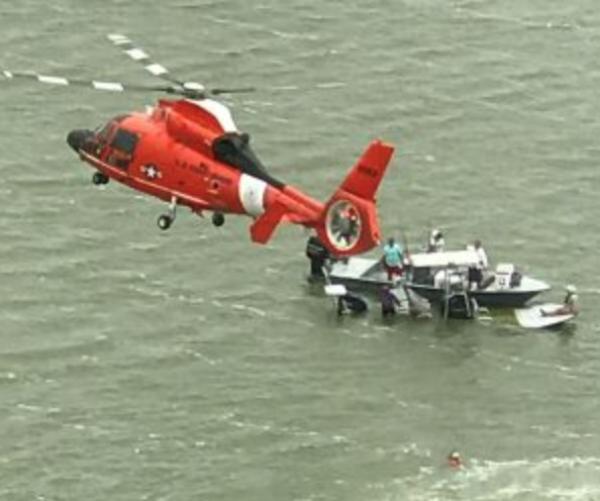
Increasingly people are asking if they really need VHF radios with such wall-to-wall cell coverage. The answer may seem obvious, but to many people it is not. Learn more about the various kinds of communication available to boaters today and what you should have.
One of the greatest benefits of being on the water is the quiet serenity and independence of being away from the sounds of civilization. Unfortunately, that “sound of silence” can turn into a nightmare when things go wrong and you need to reach out for assistance.
Cell Phones Aren’t Enough
This is usually when new boaters quickly realize that cell phones, despite their great innovation, have limitations, especially in the marine environment. Cell phones lack the range that can be attained by marine radios. They don’t allow for other nearby vessels to respond, since they communicate point to point rather than using open broadcast, and cell phones are generally not as hardened as marine radios and often fail due to environmental factors or poor battery life.

Since the turn of the last century, mariners have relied on marine radios to communicate to shore and to other vessels for numerous reasons including:
- Navigational and weather information
- Logistical needs and marina arrangements
- Hazards and environmental changes
- Emergency assistance
The Coast Guard, Federal Communications Commission (FCC), National Oceanographic and Atmospheric Administration, and others have gone to great lengths to enhance and maintain various radio systems to enable two-way communication for mariners in all weather conditions and at great distances from shore.
Marine-radio communication can generally be divided into two zones, each having particular characteristics and capabilities. The following is a brief description of each zone and type of radio commonly used.
Inshore/Coastal Zone – VHF/FM

The coastal region is generally described as areas within 20 nautical miles and along the inland navigable waters. The U.S. Coast Guard supports this region with a system called “Rescue 21” as part of the National Distress and Response System (NDRS). The Coast Guard monitors VHF/FM channel 16 for maritime distress calls and provides urgent marine information for the area.
Repeaters Improve Radio Range
It employs a network of repeaters which are very tall radio towers or “high sites” that are connected to a central controlling station located at the Coast Guard Sector office that is responsible for the region. Therefore, you may notice that VHF/FM calls are often answered by the U.S. Coast Guard hundreds of miles away due to this system of networking and repeaters along the coast. The system monitors the distress frequency 24 hours a day and has the capability of using direction finding (DF) to identify the source of a distress call. The system also monitors VHF/FM channel 70 for DSC distress calls.
VHF/FM radios transmit on the frequency between 156.0 and 174 MHz and have a range of approximately 20 nautical miles at the rated output power of 25 watts. VHF/FM radio signals are considered “line of sight” which means they can only travel from antenna to antenna and do not travel over the horizon.
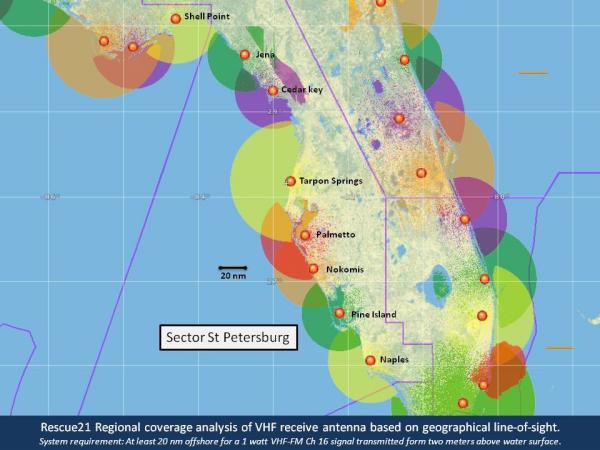
Boaters need to make sure the VHF is working each time they leave the dock. To help minimize nonemergency radio traffic on VHF/FM channel 16, automated radio checks can be conducted on other channels in the region. Check with SeaTow or Boat U.S. for a nearby frequency.

Inshore/Coastal Zone – DSC
The Coast Guard’s Rescue 21 system incorporates Digital Selective Calling (DSC) which has been integrated into most VHF/FM radios. The system allows the boat’s position to be added to the radio transmission, using GPS input. When the mariner activates a DSC alert button on their radio (usually the button is placed behind a spring-loaded red door to prevent accidental activation) information identifying the vessel and its GPS position is transmitted to nearby vessels and the U.S. Coast Guard. The type of distress can also be input manually.
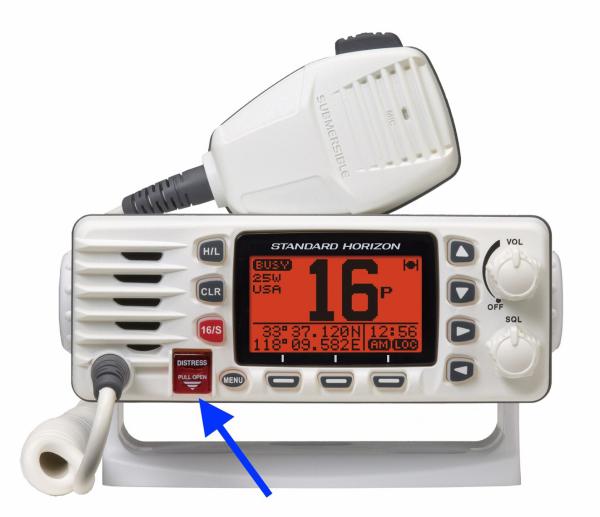
Please note that a DSC-enabled radio often must be properly configured on the vessel and connected to a working GPS unit. Also, the owner must register the boat with a Maritime Mobile Service Identity number (MMSI) for DSC and input the number into the VHF as well.
Inshore/Coastal Zone – AIS
Another recent innovation in maritime communication is the Automated Information System (AIS). The system uses all digital radio communications and shares information including a boat’s name, position, heading, speed, and more, and can even warn of a possible collision. Many systems poll other boats and coast stations for the same information, and can even plot the position of the other targets on an integrated chartplotter.
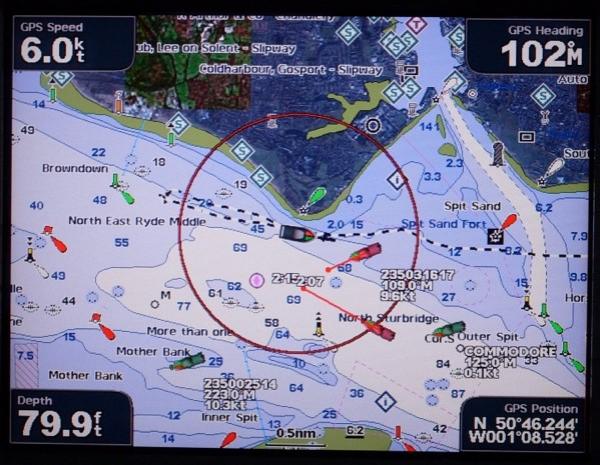
All vessels greater that 500 gross tons or with passengers on board are required to have AIS. A huge benefit of AIS-equipped vessels is that it provides a warning and tracking system for other vessels in the area. This becomes a great tool, especially when operating in busy harbors or channel entrances. AIS uses two VHF radio channels (87B) and (88B) at 161.975 MHz and 162.025 MHz.
Offshore Zone – HF
Vessels that routinely operate well offshore and beyond 20 nautical miles typically use HF (High Frequency) radio equipment. HF radios are not limited to line of sight transmissions and can reach out thousands of miles thanks to sky wave propagation where signals reflect off the ionosphere. Various frequencies are reserved for maritime use and range from 2 - 25 MHz (megahertz), 4000 - 4063 kHz and 8100 - 8195 kHz (kilohertz).

DSC is also integrated with the equipment so automatic positioning and identity can be transmitted in emergencies. Unfortunately, compared to VHF/FM, HF radios are more costly and are much more susceptible to interference in the atmosphere.
Offshore Zone – Satellite
Satellite communications (SATCOM) have become increasingly popular with mariners, especially for those who operate in remote areas or well offshore. Thanks to advances in equipment, technology and the number of satellite service providers, SATCOM has become more affordable for recreational users too. SATCOM operates on various bands from 3 - 20 GHz and provides both voice and data communications. Like cellular voice communications, SATCOM involves point-to-point calling, so other vessels in the area will not hear a distress call.
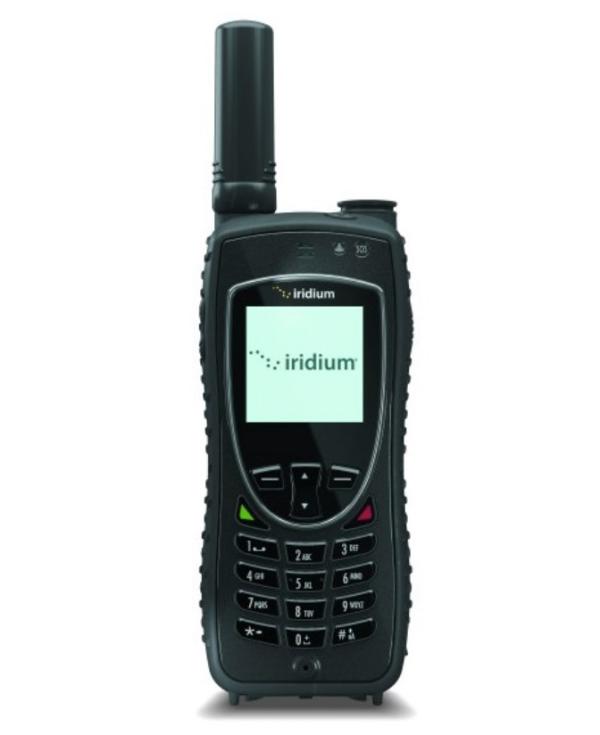
However, SATCOM can also provide DSC capabilities that provide location and identification to other vessels that have the capability. Similar to HF communications, SATCOM are susceptible to interference in space.
Offshore Zone – EPIRBs
Emergency Positioning Radio Beacons (EPIRBs) are one of the best tools to ensure response to a distress. Thanks to satellites that continually monitor for alerts, hundreds of mariners have been rescued since this innovation. EPIRBs operate on the 406 MHz frequency.

When properly configured, the EPIRB transmits a vessel’s identity and location which is received by the satellites and transmitted to rescue authorities or other vessels nearby. All EPIRBs can be manually operated and many units can be set up to deploy automatically if a vessel sinks. The device is highly recommended for vessels that travel offshore frequently.
Pay Attention to Distress Calls
The ability to communicate on the water is vital to the safe and successful operation of a vessel. For the continued safety of a vessel and passengers, the owner or captain should make sure to have the proper equipment for the region. Lastly, all captains and crew should make sure to monitor the radio for the appropriate distress frequency. According to law, any vessel equipped with a VHF marine radio must maintain a watch on channel 16. But more importantly, any vessel listening might be the closest vessel and could save someone’s life.
If YOU have a question about a boat, engine, or any aspect of boating, we'll try to answer it…click here.